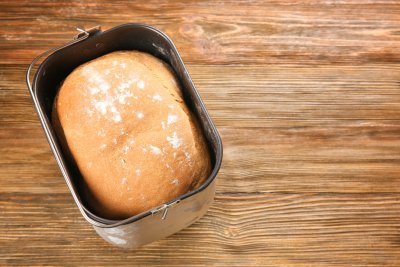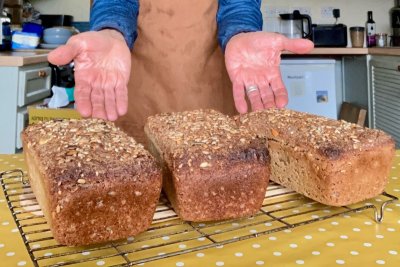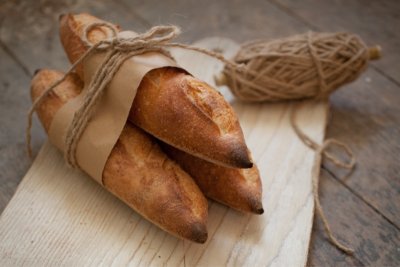Sustain / Real Bread Campaign / Recipes
Bread machine sourdough
Notes from experiments with an adopted, secondhand breadmaker.

Being natural, living things, all sourdough starters work at different rates, while (though very much not living things) all bread makers have different cycles/programs. I tried both of the methods below a few times, which each time produced a tasty loaf that was dense, chewy and about two-thirds the height of a loaf produced with dried yeast instead of the starter culture.
NB Choosing to ignore a breadmaker manufacturer's instructions is something that you do at your own risk. Neither the Real Bread Campaign or I can take any responsibility for any resulting damage, invalidated warranty, or rubbish loaves.
Maybe by the time you read this, manufacturers will have made machines that allow you to programme the times for each stage of the process, or at least a set programme that works for sourdough bread.
If you do manage to produce a decent loaf of genuine sourdough bread in a machine and would like to share how, please drop us a line.
Ingredients
275g water (cold, except as stated)
50g very active rye sourdough starter*
5g salt
500g strong/bread flour (wholemeal, white, or a mixture of both)
This starts as a very stiff dough but the long fermentation relaxes the structure considerably.
* If baking once a week, on a Saturday, I remove it from the fridge to refresh it on Thursday morning, Thursday evening and Friday morning.
Method 1
(Straight dough)
Add the water, starter, salt and flour to the bucket. Secure in the machine and run the dough cycle for about ten minutes until the mixture has cleared - i.e. no dry bits remain.
Turn off the machine, cover the bucket with a plastic bag to prevent the dough forming a skin and leave for 10-12 hours. I left mine overnight. Room temperature averaged about 20°C.
Remove the plastic bag and run the cycle with the longest proving times.
Method 2
(Using a leaven / pre-ferment)
Add the starter, half of the water and half of the flour to the bucket. Secure in the machine and run the dough cycle for about ten minutes until the mixture has cleared i.e. no dry bits remain.
Turn off the machine, cover the bucket with a plastic bag to prevent the dough forming a skin and leave for 10-12 hours I left mine overnight. Room temperature averaged about 20°C
Remove the plastic bag, add in the remaining water (warm), flour and the salt. Run the dough cycle again until all ingredients are incorporated evenly. Turn off the machine, cover the bucket with a plastic bag to prevent the dough forming a skin and leave for 4-6 hours.
Remove the plastic bag and run the cycle with the longest proving times.
Cycle times
These are the details of two cycles that worked best on the machine I used. Neither was ideal but the first allowed more time for rising and the second produced a browner loaf. There was one cycle with a final rise that was 10 minutes longer but its 50 minute bake barely browned the sourdough loaf.
Whole wheat (small)
30 min rest
32 min knead
76 min rise (at 32°C)
10 sec knock back
30 min rest (at 32°C)
18 sec shape
57 min rise (at 32°C)
60 min bake (at 115°C)
Basic white (large)
45 min knead
29 min rise (at 32°C)
23 sec shape
56 min rise (at 32°C)
65 min bake (at 130°C)
Recipe text © 2010 Chris Young / the Real Bread Campaign. Reproduction prohibited without written permission of the copyright holder.
Social sharing
If you make this, please share your photo(s) with the world on social media using #RealBread and other relevant hashtags, linking back to this recipe. Better still if we can see you in the photo, too: #WeAreRealBread!
Please don't forget to tag us, and the recipe's author. You can find us on:
- Twitter: @RealBread
- Instagram: @RealBreadCampaign
- Facebook: @RealBreadCampaign
Published Friday 5 January 2024
Real Bread Campaign: The Real Bread Campaign finds and shares ways to make bread better for us, better for our communities and better for the planet. Whether your interest is local food, community-focussed small enterprises, honest labelling, therapeutic baking, or simply tasty toast, everyone is invited to become a Campaign supporter.




